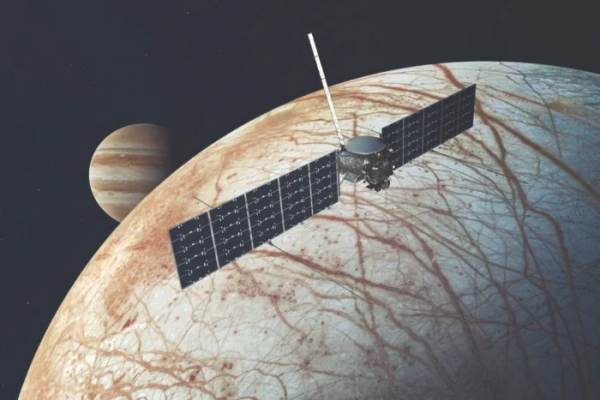
The solar system has numerous satellites orbiting around the planet. Among them, Jupiter’s moon Europa, and Saturn’s moon Enceladus are the moons that draw special attention from scientists. Scientists are particularly interested in the oceans under the thick ice crust where life may exist, and they pay more attention to the larger moon, Europa.
The primary goal of Europa’s exploration is to find traces of life in water vapor and ice particles erupting through Europa’s icy crust. “The Europa Clipper,” NASA’s Europa probe scheduled for launch this year, plans to reach Europa by 2030 to gather relevant information.
However, apart from the Europa Clipper’s identification of signs of life, scientists are planning to penetrate Europa’s ice crust and explore the sea within it.
This is because regardless of whether the Europa Clipper finds evidence of life, it will eventually have to enter the ice crust to either venture more deeply to find the signs of life or confirm the identity of the found signs of life.
The difficulty here is that Europa’s ice crust is very thick. Europa’s surface temperature is -171 degrees Celsius on average, forming an ice crust that is incomparable to Earth’s glaciers. The thickness is thought to be at least several tens of kilometers, but no one knows the exact thickness. First, since we need to know the thickness accurately to develop a probe to penetrate it, many scientists are working to answer this question.
Professor Brandon Johnson and Prof. Shigeru Wakita of Purdue University analyzed data from Galileo probe that explored Europa in detail in 1998 and calculated the thickness of the ice crust. The research team used this method to analyze the shape and size of a large crater on Europa’s surface and conduct a simulation. They paid attention to the structure in which the ice was broken by shock waves and created several concentric circles like a target.
According to the research team’s simulation, the thickness of the ice crust is at least 20 kilometers, which is not easy to penetrate at the current technological level. If scientists want to send a probe inside the sea, they should first think of a way to melt or penetrate at least 20 kilometers of ice. However, the question remains whether Europa’s ice crust is the same thickness everywhere, or if it is at least 20 kilometers, what is the maximum?

The question cannot be answered with the low-resolution images that the Galileo probe sent to Earth a long time ago. However, on March 23, researchers from the University of Washington and the Free University of Berlin said, “We have successfully used observation equipment from the Europa Clipper to find traces of life mixed with hundreds of thousands of objects.” NASA is also planning the Europa Clipper in November to find traces of life in Europa. It plans to send a satellite with the same name, “Europa” also named that orbits Jupiter to conduct a detailed analysis of the environment and traces of life on Europa. The Europa Clipper is equipped with nine different types of cutting-edge observation equipment for the precise observation of Europa. The newly proven device is the Surface Dust Analyzer (SUDA), which analyzes the components of matter ejected from Europa. Europa continuously ejects dust and ice grains towards space due to its active crustal activity. SUDA is a device that captures Europa ejections from space, ionizes them using lasers, and measures their mass. By comparing the charge amount and mass of ions, one can find out what constitutes the ejection. The researchers verified the performance of the SUDA on Earth by using Sphingopyxis alaskensis, a bacterium that lives in the Alaska Sea. Unlike E. coli, a bacterium commonly used in experiments, it is advantageous for survival in the Europa environment. It can survive even if it has little nutrition while living in a relatively cold environment.
In addition, the research team also identified the age of Europa’s ice crust. According to the research team’s analysis, Europa’s craters were formed between 50 and 100 million years ago.
From a human perspective, 100 million years may seem vast, but it is relatively recent in cosmic terms. Compared to the well-preserved craters billions of years ago on the surface of Mars or the moon, Europa’s ice crust is frozen and constantly changing. In the research team’s model, convection of the ice crust is slowly occurring, which causes the surface’s ice crust to change continuously.
When the Europa Clipper’s exploration begins in earnest, it is anticipated that the secrets of Europa, which hold the mysteries of life, will be revealed one by one. One day, we will attempt to explore the sea beneath the ice’s crust based on this information.


